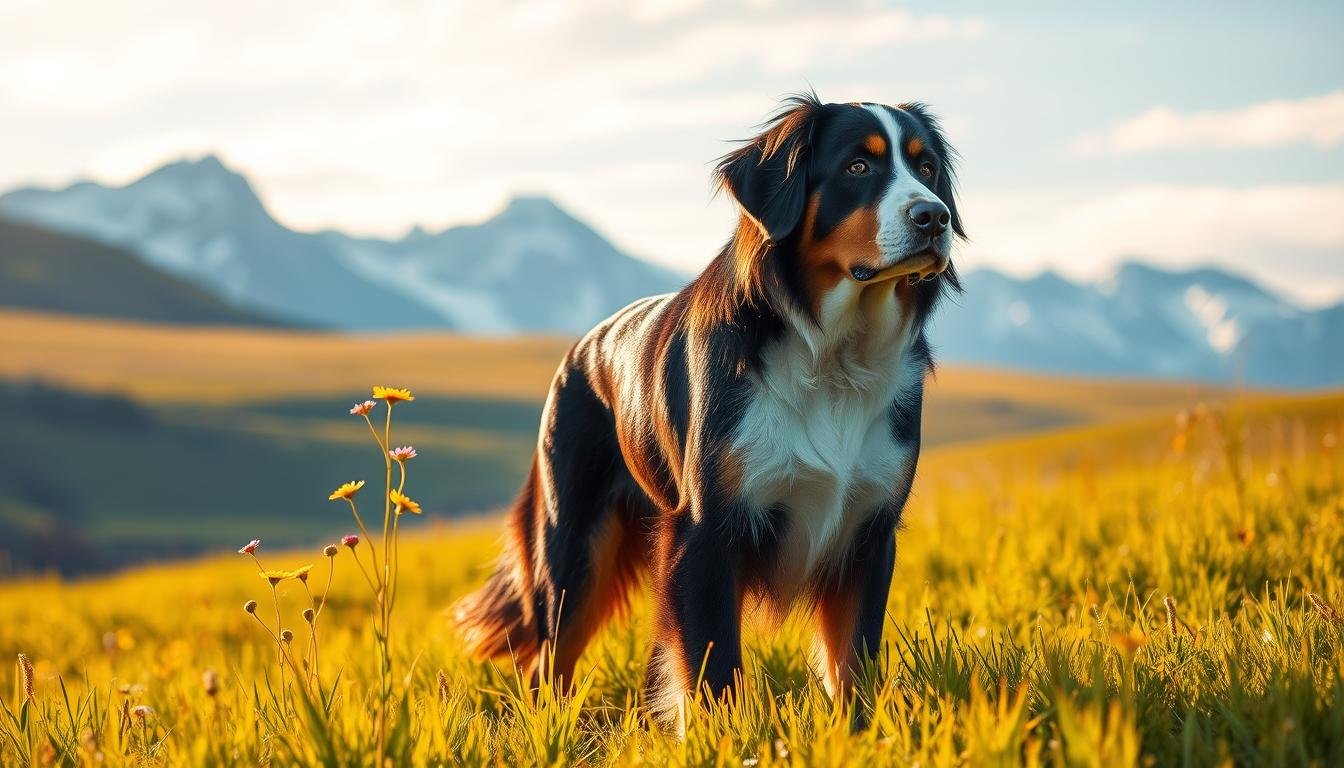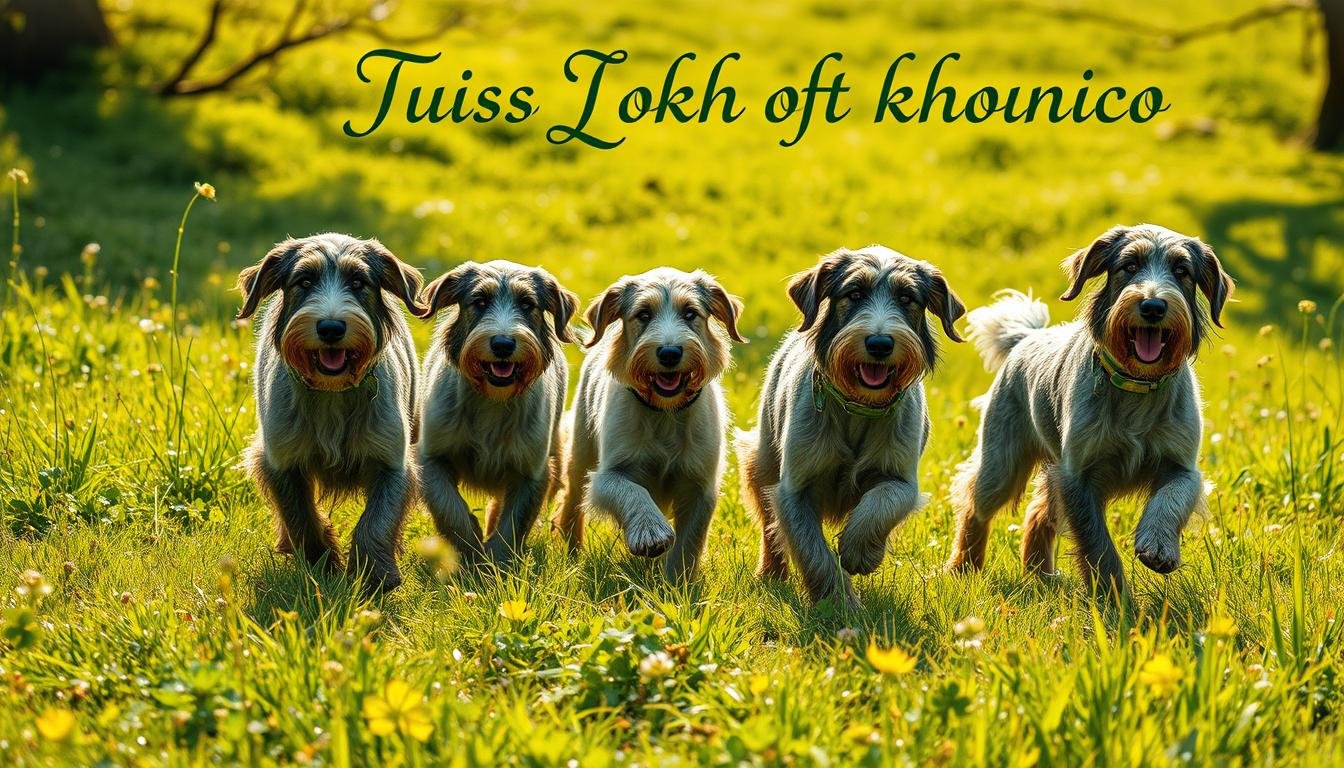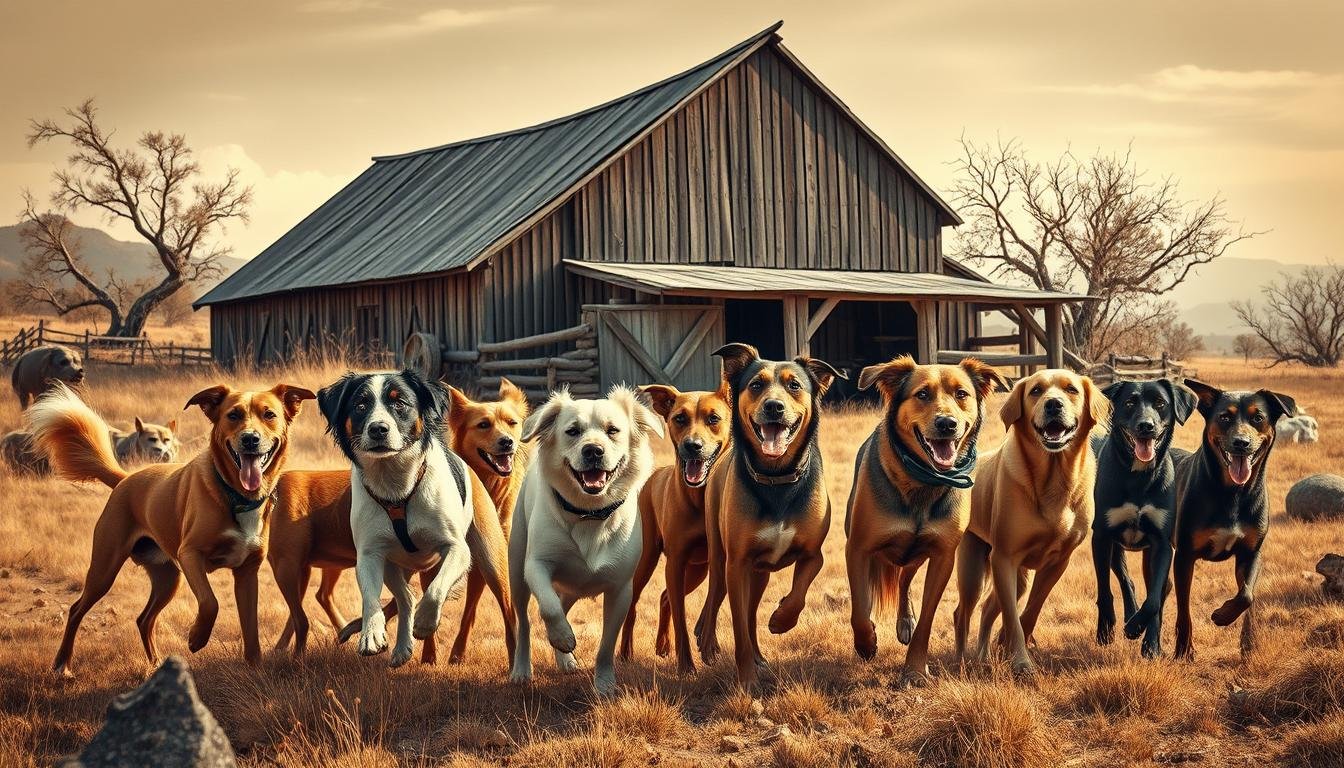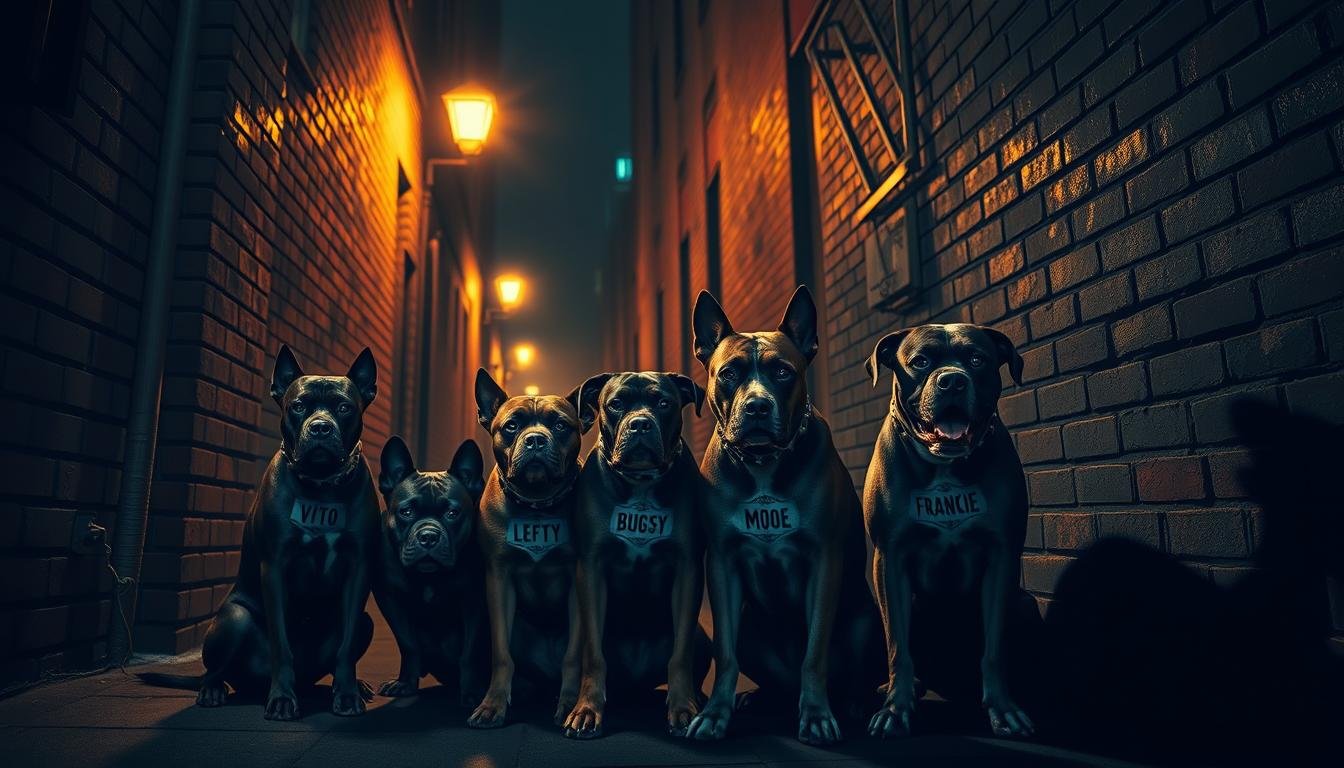Ever fallen head over heels for a Bernese Mountain Dog’s charm but hesitated because of the legendary shedding? We’ve all been there. What many assume is a short-haired version of that beloved fluffy companion is actually the Greater Swiss Mountain Dog – a majestic breed that offers that iconic tricolor beauty without turning your home into a fur-covered landscape.
These sturdy companions stand tall—males reach up to 28.5 inches at the shoulder—and carry themselves with the confidence of a true alpine working breed. Their dense double coat, while shorter than their Bernese cousins’, still boasts that striking black, white, and rust pattern we adore. Best of all? You’ll spend less time vacuuming and more time enjoying those signature “big-dog leans” during family movie nights.
What truly captivates us is how these gentle giants blend strength with sweetness. Their personality mirrors their long-haired cousins’ affectionate nature, but with a practicality that fits modern life. Whether they’re playfully herding kids in the yard or snoozing by the fireplace, they prove you don’t need endless fur to have endless love.
Key Takeaways
- Greater Swiss Mountain Dogs are often confused with short-haired Bernese Mountain Dogs
- Double coats require less grooming than traditional long-haired breeds
- Males can weigh up to 140 pounds with a striking tricolor pattern
- Maintains the Bernese temperament in a more practical package
- Ideal for families wanting lower maintenance without sacrificing personality
Introduction to Our Adorable Alpine Companion
Imagine discovering a breed that delivers all the charisma of a classic Swiss working dog but leaves the lint roller gathering dust. That’s the magic of these tricolored wonders – think of them as the “low-maintenance soulmates” of the alpine world. Their cheerful eyes sparkle with mischief, yet their sturdy build whispers centuries of hauling milk carts through snowy passes.
What Makes Them Special?
Breed enthusiasts often describe them as “sunshine in dog form” – a rare combination of work ethic and playfulness. Unlike many large breeds, they maintain puppy-like enthusiasm well into adulthood. The American Kennel Club notes their population remains small, with fewer than 100 puppies registered annually through some clubs.
Their secret weapon? A coat that’s practically self-cleaning. While most double-coated breeds leave tumbleweeds of fur, their shorter hair tends to stay put between weekly brushings. It’s like owning a luxury SUV that only needs gas every other month.
Our First Impressions
Meeting one feels like encountering a living teddy bear with a PhD in adventure. They greet strangers with gentle curiosity rather than suspicion, their tails conducting an invisible orchestra. During our visit to a breeder, a 120-pound male promptly plopped into our laps – because apparently, all giants think they’re lap dogs.
What surprised us most was their emotional intelligence. They’ll match your energy for hiking trails or Netflix marathons, always keeping one ear perked for snack opportunities. It’s this adaptability that makes them perfect for both rural homesteads and city apartments (with proper exercise).
Timeless History & Alpine Origins
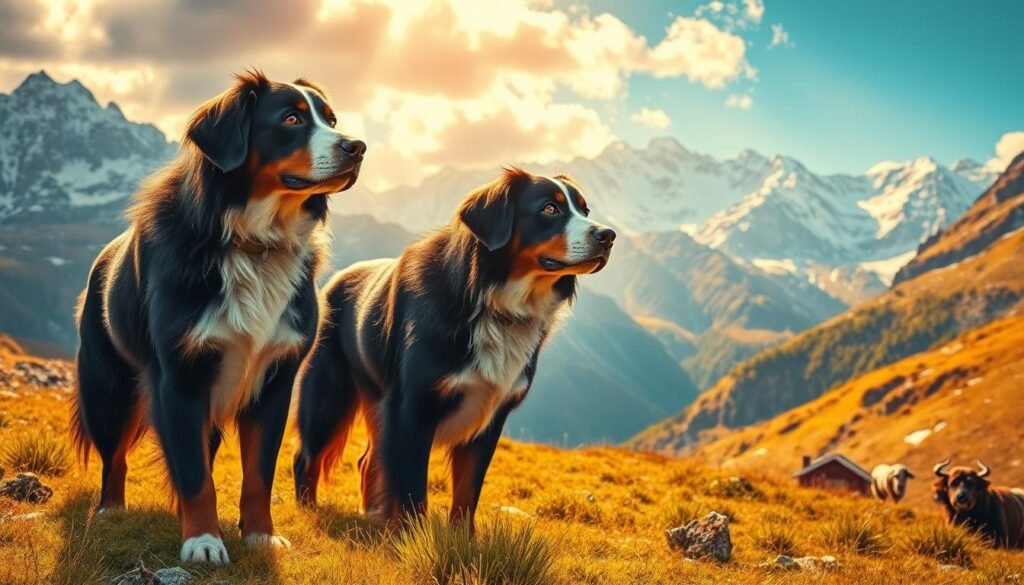
Picture a time when alpine farmers relied more on canine brawn than horsepower. In the Swiss Alps, where narrow paths defy modern machinery, our four-legged freight trains became indispensable. Their story reads like a Netflix historical drama – complete with near extinction and a last-minute rescue.
Early Beginnings in the Swiss Alps
When Swiss farmers started breeding these living tractors around 1515, they needed dogs that could haul cheese wheels up slopes steeper than a toddler’s tantrum. Isolated valleys became genetic laboratories, crafting muscular beasts through strategic inbreeding. For three centuries, they served as the working group MVP – pulling carts, herding cattle, and doubling as furry space heaters.
The nickname “poor man’s horse” wasn’t just cute branding. A single Greater Swiss could drag 1,000 pounds – equivalent to hauling a grand piano up Machu Picchu. Yet by 1900, steam engines nearly erased their legacy. Only a handful survived in remote mountain villages.
Modern Revival and Working Heritage
Enter Professor Albert Heim – the Indiana Jones of dog breeds. In 1908, he spotted a Greater Swiss at a show and launched a rescue mission worthy of a heist movie. Breed enthusiasts formed the first club in 1912, though international recognition took until 1939. Talk about a slow-burn success story!
| Era | Role | Skillset |
|---|---|---|
| 1500s-1800s | Farm Workhorse | Cart pulling, herding, guarding |
| 1900s-Present | Family Protector | Emotional support, hiking buddy, couch conqueror |
Today’s versions still carry that alpine grit in their DNA. Watch one “help” with groceries, and you’ll see centuries of mountain work ethic shining through. Their revival proves some legends are too good to stay buried.
Key Characteristics of the short haired bernese mountain dog
What if we told you these alpine athletes come with built-in art supplies? Their coat patterns aren’t just pretty – they’re living history lessons etched in fur. Let’s decode nature’s masterpiece.
Distinctive Markings and Coat Attributes
Their tricolor scheme follows stricter rules than a Swiss watchmaker. The chest sports a white “Swiss cross” that would make any flag designer jealous. That white blaze between the eyes? Breeders call it the “kiss of authenticity” – like getting a wax seal on a love letter.
Rust accents appear in precise locations:
- Cheek patches resembling blushing emojis
- Leg bands between black and white sections
- Eyebrow dots serving as permanent puppy-dog eyes
Comparison With Their Long-Haired Cousins
While their fluffy relatives need daily brush-athons, these pups rock the wash-and-wear lifestyle. Their 1.25-2″ outer coat sheds seasonally but won’t carpet your floors like confetti at a parade. Think of it as trading a mink stole for a practical parka.
| Feature | Greater Swiss | Bernese |
|---|---|---|
| Coat Length | 1.25-2 inches | 3-4 inches |
| Weekly Brushing | 10 minutes | 45 minutes |
| Vacuum Sessions | 2/week | Daily |
Both breeds share that iconic alpine look, but only one lets you wear black pants without becoming a walking fur display. Their shorter double layer still shrugs off snow like a seasoned ski instructor – proof that practicality can be breathtaking.
Temperament and Family-Friendly Nature
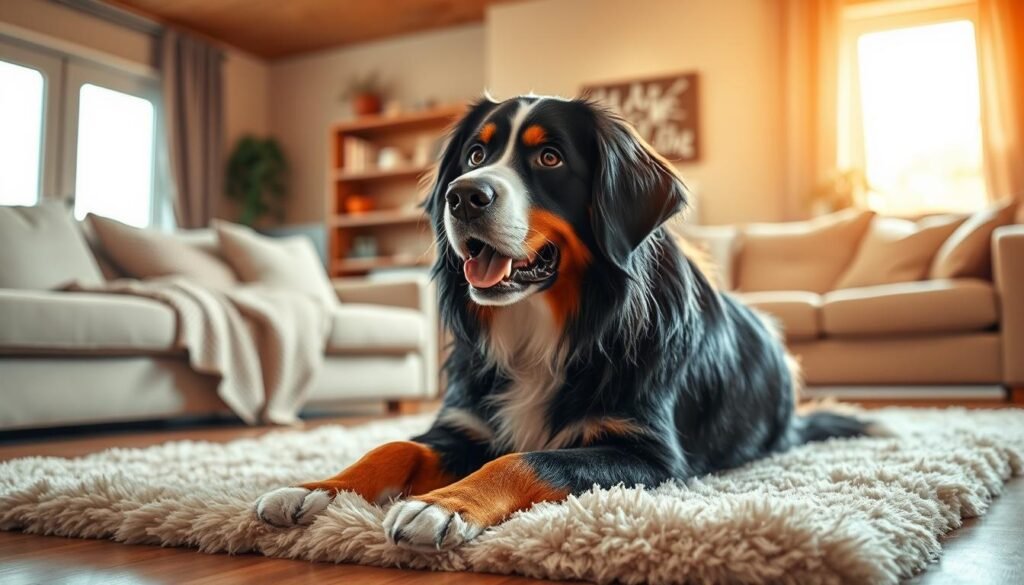
Picture a four-legged diplomat who moonlights as a professional snuggler. These tricolored charmers possess a temperament cocktail – two parts dignity, one part goofball, served with a twist of unwavering loyalty. Their secret? Centuries of evolving from alpine workhorses to household heart-stealers.
The Etiquette of Enthusiasm
Breeders often joke they’re “golden retrievers in a linebacker’s body.” Watch one greet guests: tail wags synchronized like metronomes, paws carefully placed to avoid knocking over toddlers. Their emotional IQ rivals most therapists – they’ll celebrate promotions with zoomies and mourn broken toys with dramatic sighs.
“They’re the only dogs that can look regal while wearing a princess tiara and drooling on your couch.”
Little Humans, Big Hearts
Children become instant celebrities in their eyes. These gentle giants specialize in:
- Emergency snack clean-up duty
- Patiently enduring tea parties with invisible guests
- Acting as living guardrails for wobbly walkers
We’ve seen kids use them as nap-time pillows and confidants for playground drama. Their protective instincts kick in like silent bodyguards – always between children and perceived dangers, yet gentle enough to steal kisses from giggling toddlers.
While supervision remains crucial, their tolerance level makes Nanny McPhee look impatient. It’s this blend of playful spirit and innate caution that transforms them from dogs into furry family members who just happen to weigh 120 pounds.
Physical Traits and Striking Appearance
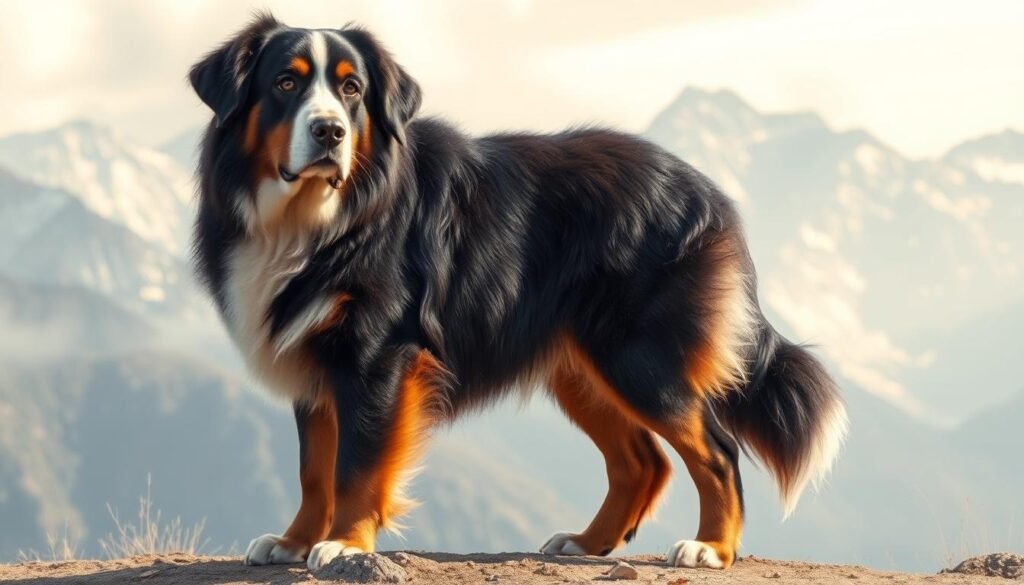
When architects design living statues, they might take notes from these alpine athletes. Every curve and angle serves purpose – a blueprint where brawn meets beauty in perfect harmony.
Built Like Swiss Watches
Males tower up to 28.5 inches – the canine equivalent of a NBA power forward. Females sport more compact frames, yet still command attention at 27 inches. Their rectangular build (10:9 length-to-height ratio) suggests someone stretched a Doberman in Photoshop.
| Trait | Male | Female |
|---|---|---|
| Height | 25.5-28.5″ | 23.5-27″ |
| Weight | 90-140 lbs | 80-110 lbs |
| Eye Color | Hazel to chestnut (dark brown preferred) | |
Those almond-shaped eyes aren’t just pretty – they’re mood rings. Watch them shift from playful amber to serious espresso brown when the treat jar opens. Set beneath triangular ears that pivot like satellite dishes, they miss nothing.
Nature’s Perfect Color Blocking
Their coat plays chromatic chess: black dominates, white claims strategic positions, rust accents pop like exclamation points. The pattern follows rules stricter than a Geneva convent:
- Snow-white Swiss cross spanning the chest
- Rust “eyeliner” enhancing those wise eyes
- Leg markings that look like pulled-up socks
This tricolor masterpiece stays crisp with minimal upkeep. Their double-layer coat shrugs off dirt like Teflon, proving elegance doesn’t require high maintenance. These sturdy legs – thick as birch trunks – complete the look, ready to climb mountains or claim your sofa.
Health Considerations and Lifespan Insights
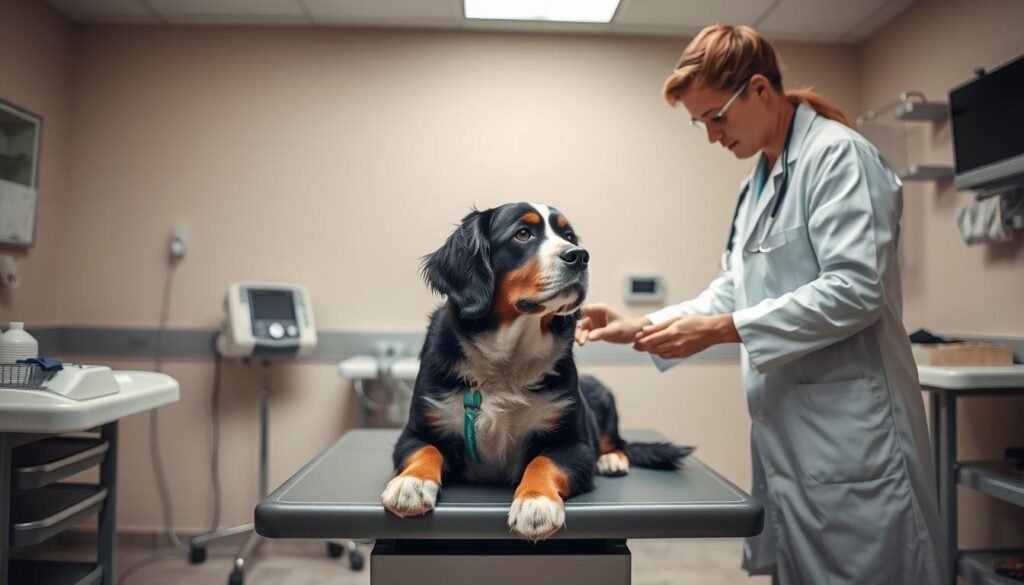
While their ancestors measured time in cheese wheels hauled up mountains, modern Greater Swiss Mountain Dogs teach us about quality moments over quantity. These sturdy companions typically enjoy 8-11 years – a decent life expectancy for large working breeds. But like a vintage Swiss clock, their longevity depends on careful maintenance.
Common Health Issues to Watch For
Their robust build hides vulnerabilities we can outsmart. Joint dysplasia often appears during growth spurts – think of it as teenage growing pains gone rogue. Epilepsy might crash the party between ages 1-3, while eyelid issues (entropion) turn blink sessions into eyelash battlegrounds.
Middle-aged females sometimes develop urinary incontinence, turning “excited tinkles” into regular occurrences. The real showstopper? GDV – gastric torsion that transforms dinner time into a life-threatening emergency. Pro tip: Elevated slow-feed bowls become your best defense against this gut-twisting drama.
Lifestyle Adjustments for Longevity
We’ve learned three golden rules from veteran owners:
- Portion control beats all-you-can-eat buffets
- Low-impact exercise preserves those powerhouse joints
- Annual vet checkups catch sneaky issues early
| Condition | Prevention Strategy | Early Signs |
|---|---|---|
| Hip Dysplasia | Weight management | Bunny-hopping gait |
| GDV | Multiple small meals | Unproductive retching |
| Epilepsy | Regular vet monitoring | Blank staring spells |
Their life expectancy may seem brief compared to smaller breeds, but we maximize every wag-filled moment. Through mindful care and early intervention, we rewrite the alpine survival guide – one healthy adventure at a time.
Working Capabilities and Training Tips
What if your dog could out-pull a pickup truck while outsmarting a chess grandmaster? Meet nature’s original draft dog – a four-legged engineering marvel built to haul 3,000 pounds up alpine slopes. Their ancestors didn’t just work; they redefined “muscle with brains” for generations of Swiss farmers.
The Legacy of Cart Pulling
These living forklifts earned their “poor man’s horse” nickname by moving entire cheese cellars before breakfast. Modern enthusiasts keep that heritage alive through carting competitions where teams pull weighted wagons – think Iditarod meets tractor pull. Their secret? A genetic cheat code combining:
- Paws like snowshoes for traction
- Hip joints engineered like truck suspensions
- Stamina that shames marathon runners
Obedience and Positive Reinforcement Strategies
Training a working group veteran requires finesse. We’ve learned to bargain like union negotiators – treats for cooperation, playtime for compliance. Their independent streak (essential for ancient draft dog decisions) demands creative motivation:
| Challenge | Solution | Reward |
|---|---|---|
| Stubborn Focus | High-value treats | Chicken jerky |
| Distracted Nose | Scent games | Puzzle toys |
| Selective Hearing | Hand signals | Belly rubs |
Early socialization turns these gentle giants into café patio pros. Puppy classes become comedy hours as future draft dog champions learn to ignore squirrels while remembering their own size. Pro tip: Train during “food o’clock” – their stomachs override stubbornness every time.
Channel that work ethic through modern jobs like therapy visits or agility courses. One owner’s “mail fetcher” now delivers packages with more care than most couriers. Whether pulling carts or hearts, these athletes prove old-world skills thrive in new-world homes.
Grooming, Nutrition, and Daily Care
Who knew keeping a tricolored powerhouse looking sharp could be simpler than assembling IKEA furniture? Our Swiss companions prove low-maintenance doesn’t mean zero effort – just smart routines that respect their working breed heritage.
Simple Maintenance for a Wash-and-Wear Coat
Weekly brushing sessions become bonding moments with these shedding specialists. We use undercoat rakes during spring blowouts – think of it as helping them swap winter pajamas for summer tank tops. Their secret? Short guard hairs that repel dirt like Teflon, cutting bath time by half compared to fluffier cousins.
Nutritional Guidance and Feeding Schedules
These dogs eat like athletes training for the Alps. We stick to two measured meals daily using slow-feed bowls – portion control prevents both obesity and dangerous bloat. High-quality kibble with glucosamine supports those powerhouse joints, while frozen carrots satisfy their need to crunch without calorie overload.
Pro tip: Keep lint rollers in every room and embrace the “Swiss sparkle” – that magical glitter of stray hairs reminding you a magnificent breed shares your home. With basic care, these dogs stay camera-ready between adventures, proving true beauty thrives on practicality.

